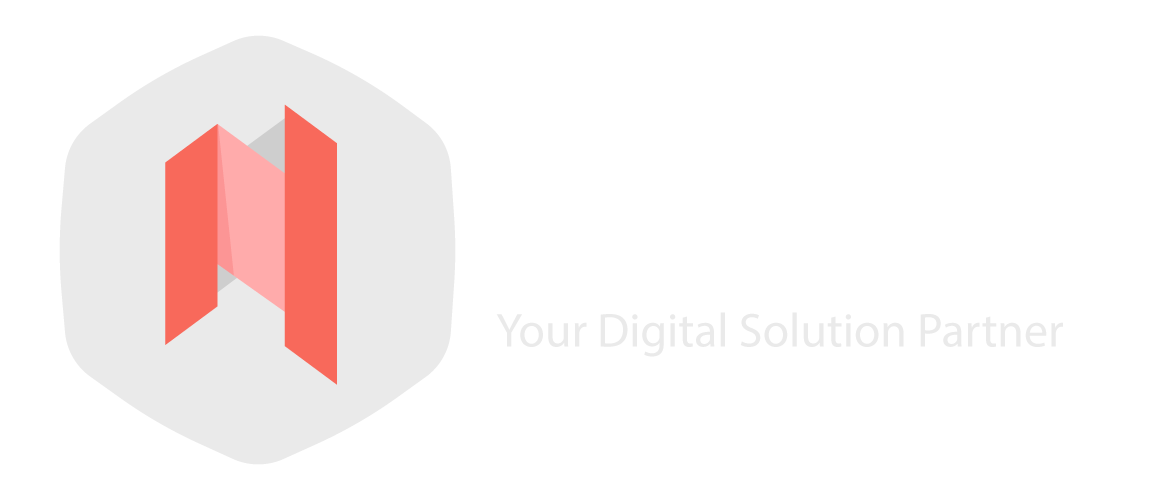What Is Digital Marketing?
Before defining & emphasizing its use of Digital Marketing, we first must briefly discuss the term Marketing. Marketing is a technique that includes actions that promote communication of business products and services to their customers, the purpose of marketing could include sales, branding, public relations, product promotion, Or market research. The traditional way of marking methods uses channels like Print, Aired TV Channels, Radio, and billboards and if we exclude this group from marketing, we are left with today’s digital age marketing techniques, which utilize electronic media for various promotional activities, Digital Marketing.
The hyperactivity & boom in internet usage over the last decade among consumers led marketers to look forward to new ways of promoting their brands & products, this approach set up a whole new trend in modern-age marketing. It is relatively new as compared to traditional marketing even though Digital Marketing is growing tremendously fast each year due to its low-cost implementation & results. Unlike traditional marketing which is all about impressions, DM is about distributing, monitoring & analyzing campaigns in real time. Marketers will see what works & what’s not by clearly reading the results with any decent analytic tool, that not only helps them save money but also improves their decision to reconfigure any campaign budget on the go.
What Comprises of Digital Marketing.
Before you can run your first digital marketing campaign, you must have content to distribute with a link/URL. Content could be in the form of a website, a landing page, your blog post, or even your e-commerce product’s showcase. Once you have what you want to share with the prospective target audience, you can be confident to start budgeting and strategizing your online marketing campaigns. Although you can start investing in whichever digital channel for marketing your product/services, generally it’s wise to start with some selected specific due to their cost effectiveness, speaking of which find below some of the digital marketing channels & their definition.
- Content: Content generation plays a major role in bringing traffic to your websites these days. If carefully planned and backed with some experience niche to your segment, content can do wonders. Content could be short content generated for paid marketing or full content generated for SEO purposes.
- SEO: Search Engine Optimization is the improving method by which your website will rank in search engine result pages (SERPs), these results are also known as organic/natural/un-paid search results presented by search engines based on search algorithms (pre-defined codes). These methods may include paying attention to website text content, page titles, links & backlinks, keywords, etc. These are just a few. SEO is mainly categorized into two parts, On-page SEO and off-page SEO. On-page SEO refers to optimizing main website elements like Text Formatting, image compression, HTML & CSS codes, Internal Links, Navigation, etc. while Off-page refers to non-website elements that affect the website traffic externally such as External Links, Social Media Mentions & Social Bookmarks. Getting a good ranking in search engines’ organic results not only brings you free quality traffic on your website, but the results also last longer than any paid ads.
- SMO: You can see Social Media Optimization as a factor that affects visitors’ traffic growth to your website through sharing & posting website content on various social media sites, this also helps improve website organic search results. SMO mainly works with site content, images, videos, etc. while SEO deals with keywords. As we said, for SMO before you make your post presentable it must be optimized first through your website, this can include refining your article structure, properly sizing your images, implementing sharing tools on the website & using social APIs. Once the content is optimized for sharing, you can benefit from Social Media in getting genuine traffic to your website.
- Paid ADs/SEM/SMM: You think SEO/SMO are time-consuming and slow, well you are certainly right, you need to be very patient in getting results with SEO/SMO techniques as they are both used in conjunction to be fruitful and require a lot of attentive work on content before you can tap results. But as there always are alternatives and for getting fast traffic to your website/content you can pay search engines & social media sites to display your unique ads.
Search Engine Marketing activities include PPC(Pay-Per-Click), CPC (Cost-Per-Click) & CPM(Cost-Per-Thousand-Impressions) through popular paid search platforms, we are not describing them here as it’s a vast topic in online advertising, so we’ll save it for some another post. Social Media Marketing is a process of gaining traffic through social media sites, internet marketer utilizes social media sites as a marketing tool, the goal here is to produce content that user will share on their social networks. For all the activities done in SMM, SMO is just a part of it, other than SMO you can also display paid ad campaigns on networking sites with target users categorized in a selective manner like age, gender, demographic, etc. Some social sites such as Facebook also provide a feature such as Boost Post to bring traffic through only with some selectively shared posts, which is more cost-effective.
- Email Marketing: Email Marketing is the activity of sending a commercial message to a group of people using electronic mail for advertisement, sales, networking, awareness & support/solutions purposes. Most people think email marketing is free to use in any manner they like, but it’s not true. There a certain criteria & conditions under which email marketing should be bound to use, you must have an approved email subscribers list before you can mass mail them, otherwise it will be considered SPAM and could harm your email-associated domain, second there must be some strategy before forwarding email messages like a optimized and appropriate content, decent email template design, redirecting links, schedule timings etc. With an email marketing strategy, it’s always wise to have a ‘Double Opt-in’ process where your consumers consent to receive bulk emails, it builds trust and reputation in the consumer’s eye.
- QR Codes: Quick Response Code is a kind of two-dimensional barcode that is used to store digital data such as URL links, Geo coordinates & text. The best feature of QR is it can be read by any handheld smartphone easily. The smartphone needs a QR reader app installed & it takes seconds to read the digital information. QR codes come in handy in providing digital information through print magazines, visiting card contacts, offer details, event details & even on e-commerce websites for every product detail. Although over the years there’s decline in their usage still those who use them surely know tech how & appreciate the technology. Note: QR codes are not in trend anymore or losing their luster over time.
The Aim Of Digital Marketing?
Digital marketing aims to leverage online channels and platforms to connect with target audiences, build brand awareness, drive traffic, and ultimately achieve business goals. Digital marketing encompasses various strategies and tactics, such as content marketing, social media marketing, search engine optimization (SEO), email marketing, paid advertising, and more.
Key objectives of digital marketing include:
- Increasing Visibility: Making a brand or business more visible to potential customers by utilizing online channels like search engines, social media, websites, and other digital platforms.
- Generating Leads and Sales: Engaging with audiences to convert leads into customers and drive sales by delivering targeted and relevant content or offers.
- Building Relationships: Establishing and nurturing relationships with customers through personalized interactions, content, and engagement strategies.
- Improving Brand Awareness: Creating and promoting content that resonates with the target audience to enhance brand recognition and recall.
- Measuring and Analyzing Results: Using data and analytics to track performance, measure the effectiveness of marketing campaigns, and optimize strategies for better outcomes.
Overall, the ultimate goal of digital marketing is to create a strong online presence, engage with the audience effectively, and drive meaningful actions that contribute to the growth and success of a business or brand in the digital landscape.
Hurdles Of Digital Marketing.
- Proliferation & Noise in Digital Channels: The sheer volume of content and advertising across various digital channels creates a competitive environment where standing out and capturing audience attention becomes increasingly difficult. Cutting through the noise to reach and engage the target audience is a significant challenge.
- Large Data Volumes: Managing and making sense of vast amounts of data collected from multiple sources (such as customer interactions, website traffic, and campaign analytics) can be overwhelming. The challenge lies in effectively analyzing this data to derive actionable insights and make informed marketing decisions.
- Constant Technological Changes: The rapid evolution of technology necessitates continuous adaptation to new platforms, tools, algorithms, and trends, making it challenging to stay updated and maintain a competitive edge.
- Adapting to Algorithm Changes: Algorithms used by search engines and social media platforms frequently change, impacting content visibility and reach. Keeping up with these changes and adjusting strategies accordingly can be demanding.
- Balancing Personalization and Privacy: Providing personalized experiences while respecting user privacy is a fine line to walk. Striking a balance between effective targeting and respecting user data privacy regulations poses a challenge.
- Attributing ROI and Metrics: Determining the true impact and return on investment (ROI) from digital marketing efforts can be complex due to multi-channel interactions. Accurately attributing conversions and determining which strategies drive the best results is often challenging.
- Cybersecurity and Trust: Cyber threats and data breaches undermine trust in digital platforms. Maintaining robust cybersecurity measures and building trust with customers is crucial but can be difficult in an environment where concerns over data security are prevalent.
- Content Saturation and Quality: With the proliferation of content, standing out and creating high-quality, engaging content that resonates with the audience becomes increasingly challenging. Cutting through the noise while maintaining consistent quality is a hurdle for digital marketers.
- Skill Gaps and Talent Acquisition: Finding and retaining skilled digital marketing professionals who understand the ever-changing landscape and possess diverse skill sets (SEO, analytics, content creation, etc.) can be a significant challenge for organizations.
- Fierce Competition: The digital landscape is highly competitive, with businesses vying for the attention of the same audience. Adapting strategies to outperform competitors, maintain relevance, and differentiate oneself in a crowded market is a continuous challenge for marketers.

